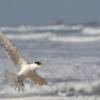-
Posts
9,441 -
Joined
-
Last visited
Content Type
Profiles
Forums
Gallery
Events
Everything posted by Jim Lad
-
Whatever your final decisions, she's a real little gem! John
- 732 replies
-
- Lula
- sternwheeler
-
(and 1 more)
Tagged with:
-
Ditto what Druxey said! 🙂 John
- 81 replies
-
- Norwegian Sailing Pram
- Model Shipways
-
(and 1 more)
Tagged with:
-
More nice progress to savor! I like that photo of the hatch propped open. Judging by the smoke being emitted, it must be pretty choking below! John
- 312 replies
-
- Chile
- Latin America
-
(and 6 more)
Tagged with:
-
More beautiful work, Greg. John
- 288 replies
-
- Santos Dumont No. 18
- hydroplane
-
(and 1 more)
Tagged with:
-
Just how visible would that extra sheathing be at your scale, Phil? Is is a detail worth tearing your hair out over? John
- 422 replies
-
- minesweeper
- Cape
-
(and 1 more)
Tagged with:
-
A major milestone in my eyes! Not only are the main staysails rigged, but the first square yard has been crossed. It's only sitting there at the moment. I hope to get all its rigging sorted out on Friday. I might do a little more work on the shape of the main topmast staysail, but I'll wait until the well deck boats are on first so I can see how it would fit between the boats. John
-
Well done! That's a really nice looking deck. John
- 312 replies
-
- Chile
- Latin America
-
(and 6 more)
Tagged with:
-
Some nice work there! John
- 81 replies
-
- Norwegian Sailing Pram
- Model Shipways
-
(and 1 more)
Tagged with:
-
If memory serves me correctly, weathered zinc looks very much like lead. You should be able to find a suitable paint that's available locally to you. John
About us
Modelshipworld - Advancing Ship Modeling through Research
SSL Secured
Your security is important for us so this Website is SSL-Secured
NRG Mailing Address
Nautical Research Guild
237 South Lincoln Street
Westmont IL, 60559-1917
Model Ship World ® and the MSW logo are Registered Trademarks, and belong to the Nautical Research Guild (United States Patent and Trademark Office: No. 6,929,264 & No. 6,929,274, registered Dec. 20, 2022)
Helpful Links
About the NRG
If you enjoy building ship models that are historically accurate as well as beautiful, then The Nautical Research Guild (NRG) is just right for you.
The Guild is a non-profit educational organization whose mission is to “Advance Ship Modeling Through Research”. We provide support to our members in their efforts to raise the quality of their model ships.
The Nautical Research Guild has published our world-renowned quarterly magazine, The Nautical Research Journal, since 1955. The pages of the Journal are full of articles by accomplished ship modelers who show you how they create those exquisite details on their models, and by maritime historians who show you the correct details to build. The Journal is available in both print and digital editions. Go to the NRG web site (www.thenrg.org) to download a complimentary digital copy of the Journal. The NRG also publishes plan sets, books and compilations of back issues of the Journal and the former Ships in Scale and Model Ship Builder magazines.





.thumb.jpg.f2bd5352869122e75223c3fe99609076.jpg)
.thumb.jpg.15ed53dd37587cca448447a9990a78e9.jpg)
